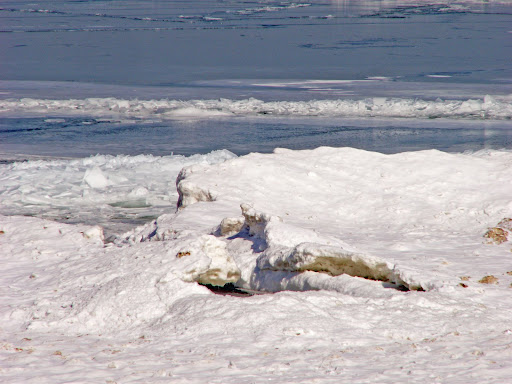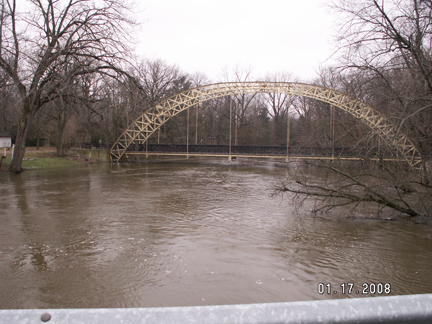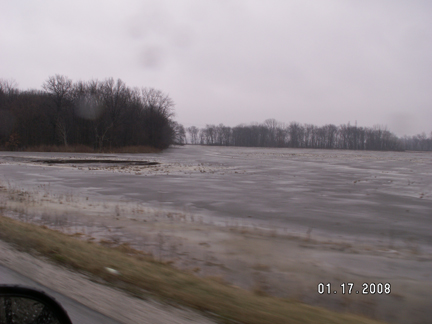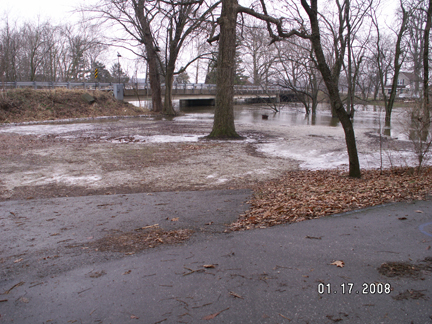 Improving understanding and forecasts of hazardous winter storms
Improving understanding and forecasts of hazardous winter storms NSSL (NOAA Severe Storm Laboratory) is about more than just tornadoes and thunderstorms--we are also a focal point for National Oceanic and Atmospheric Administration (NOAA) research on hazardous winter weather.
In addition to conducting research on convective storms, NSSL scientists study blizzards, freezing precipitation, and heavy snow. Radar research and development efforts also are being conducted to improve the discrimination of rain from snow, the quantitative measurements of snowfall, and the small-scale structure of winter-weather system
The Intermountain Precipitation Experiment (IPEX)
IPEX is a research program designed to improve the understanding, analysis, and prediction of precipitation and precipitation processes in the mountains of the western United States. Over 30 scientists from NOAA and the Universities of Utah, Oklahoma, and Nevada collected data in February 2000 using research aircraft, mobile radars, and weather balloons. Analysis and interpretation of this data will allow project scientists to examine the factors controlling the distribution and intensity of snow across narrow, steeply sloped mountain ranges like the Wasatch Mountains.
PAYOFF: The knowledge gained through analysis of IPEX datasets conducted by NSSL scientists will lead to better forecasts of deadly winter storms in the western United States
MORE INFORMATION:
http://www.nssl.noaa.gov/teams/ipex/
Precipitation Type
Predicting the type of precipitation (rain, snow, freezing rain, or sleet) can be a difficult forecast challenge. A first step in such predictions is understanding the climatological distribution of precipitation type. NSSL scientists are working with collaborators at the National Center for Atmospheric Research, Environment Canada, and the University of Oklahoma to compile such information for North America. The next step to improve forecasts is to develop algorithms for the prediction of precipitation type. The goal of the Precipitation-Type Algorithm Experiment (PTAX) is to determine the quality of existing algorithms and investigate ways to display the results using probabilities. Other research at NSSL showed the importance of falling snow melting aloft to changing the precipitation type observed at the surface.
PAYOFF: Better information will help forecasters provide more accurate warnings for freezing rain, sleet, and snow.
MORE INFORMATION: http://www.cimms.ou.edu/~cortinas/preprints/avi09/9aviation.html
http://www.spc.noaa.gov/exper/ptax/
Winter Lightning
Lightning is not restricted to summertime thunderstorms--sometimes snowstorms can produce lightning as well. NSSL scientists have produced maps of wintertime thunderstorms across the United States that show these storms occur most frequently in the Great Plains. Another study provides guidance for forecasters in Buffalo and Salt Lake City for determining the occurrence of lightning associated with lake-effect snowstorms in their localities. Finally, during IPEX, NSSL scientists and their collaborators obtained the first measurements of the electric field inside winter storms over the United States.
PAYOFF: This research will improve the fundamental understanding of conditions that cause wintertime lightning.
MORE INFORMATION:
http://www.nssl.noaa.gov/mag/network.shtml
Banded Precipitation Studies
When precipitation appears as organized bands on radar, accumulation at the surface can be extreme. Researchers are looking at conditional symmetric instability and frontogenesis as predictors of banded precipitation. Other studies have shown that small-scale circulations in winter precipitation can sometimes be similar to supercell thunderstorms.
PAYOFF: Studies of banded precipitation ultimately result in better mesoscale forecasts, traveler's advisories, and other detailed forecast products used by schools, businesses, transportation systems and local governments.
MORE INFORMATION: http://www.nssl.noaa.gov/csi/
Improving WSR-88D Snowfall Estimates
Data from IPEX and previous winter storm studies in the mountains of northern Utah are being used to calibrate the nearby WSR-88D. A special network of snow gauges provides snow water equivalent measurements that are used to determine correction factors for remote radar precipitation estimates.
PAYOFF: More accurate radar precipitation estimates provide forecasters with better real-time water-equivalent snowfall rates. In addition, hydrologists and water managers (e.g., reservoir operators) have more accurate knowledge of potential snow melt run-off.
These pix's were taken at Indiana Dunes National Lakeshore Park. Shelf Ice is a beautiful thing but extremely dangerous because of its stability or lack thereof. How a look of beauty can be so very deceiving.
TWISTER NEWS -
March 1st is here! The Chase begins!
FEMA specialists offer help to rebuild more safely after tornadoes
FEMA hazard mitigation specialists will be at local building supply stores today through Saturday with information to help residents rebuild more safely and stronger following the severe weather of Feb. 5. (Story)
Survey Teams Confirm 3 Tornadoes in Tuesday Storms
Survey crews confirmed three tornadoes touched down early Tuesday. All were classified as E-F-One.
Tornadoes and straight line winds were blamed for causing thousands of dollars in damages in Leeds, the Pell City/Cropwell areas, Highland Lakes in northern Shelby County, northeast Talladega County and southern Calhoun County.
In Leeds, an elderly woman was killed when a tree fell on a mobile home.
Meteorologists said aerial and ground surveys determined that dozens of homes and businesses in the affected counties suffered minor to major damage.
An E-F-One tornado can generate wind speeds of between 86 to 110 miles per hour.
Forecasters say no severe weather is expected for the remainder of the week.
Houston EMA Chief Questions Siren Use
By: Lorra Lynch
Perry's fire chief turned on the tornado sirens during Tuesday's threat of severe thunderstorms. The sirens caused many people to believe there was a tornado warning.
Houston County EMA Director Jimmy Williams says he's concerned about the decision to activate sirens in Perry during Tuesday's severe weather.
Williams says Chief Joel Gray's decision to turn on the sirens to alert people about the threat of severe thunderstorms instead of tornados caused a flood of calls to the E-911 center. He called the volume of calls "very disruptive."
Chief Gray said he activates the sirens during any severe weather or homeland security threat. He said he's going by FEMA guidelines, and plans to stick with the policy until he's told to do otherwise by city management.
Williams met with Houston County Commission Chair Ned Sanders about the issue Wednesday morning. He says they plan to schedule meetings on the use of the sirens as soon as possible.
The City of Perry and Robins Air Force Base are the only areas in Houston County with access to tornado sirens.
MARITIME NOTES
UK. RNLI heroes & Coast Guard heroes honoured for MV Ice Prince rescue, read the dramatic story
The Coxswain of the Torbay RNLI lifeboat, Mark Criddle, is to be honoured by the Royal National Lifeboat Institution as the charity awards him the Silver Medal for Gallantry, recognising him for his leadership and outstanding seamanship during the rescue of eight seamen from the stricken merchant vessel Ice Prince on the night of 13 January 2008.
Coxswain Criddle’s volunteer crew on that night – Deputy Second Coxswain Roger Good, Deputy Second Coxswain John Ashford, Mechanic Mathew Tyler, Second Mechanic Nigel Coulton and Crew Members Darryll Farley and Alex Rowe – have also be recognised for their bravery and will each receive the Thanks of the Institution inscribed on Vellum.
Riverdance ferry "can be righted"
By Lisa Ettridger
"It's part of the accommodation, where the lorry drivers would sit to have a cup of tea," said Richard Skeats of the MCA.
Messing About In Ships Podcast #12 - Special Interview of US Coast Guard Rescue of Sailors Aboard the Yacht Sean Seymour II
Speaking of "winter weather"... Have a great weekend!
RS
















































































































![Validate my RSS feed [Valid RSS]](valid-rss.png)